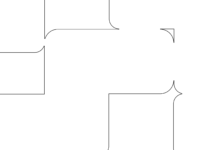The ‘what’ and ‘why’ of design debt
The first part of the ‘Design Debt 101’ series.The ‘what’ and ‘why’ of design debtMonday afternoon. Kick-off meeting. This new project looks very promising, you may have discovered a niche no one knew about. It turns out, you need notifications. “Great! We have a notification system. It shouldn’t be..
Ink traps and pals
Recently I’ve seen this tweet from Yves Peters asking how to call these spikes which I replied briefly (spoiler: it’s a light trap!). I had a lot more to explore on the topic, so I decided to write not just about light traps, but similar concepts and shapes too. There are days in life of typeface de..
Is your team a spender or a rainmaker within your org?
The critical difference in how companies view “spenders” versus “rainmakers”
Continue reading on UX Collective »
Designing for the autistic community
Product design principles that will improve usability for everyone.
Continue reading on UX Collective »
Radical bravery: How to design for vulnerability
Continue reading on UX Collective »
I’m a designer. I earned $50K more because of COVID last year.
Pandemic-induced efficiency is real, and we’re all better off for it.
Continue reading on UX Collective »
Germ theory, Art Nouveau and the future of design in a post-pandemic world
Changes that affect the mind of the greater public frequently have unpredictable consequences to the way society is structured and built…
Continue reading on UX Collective »
How to write inclusive, accessible digital products
Good UX writing invites everyone to use the interface.There’s one piece of writing advice I give to everyone:
Read your writing out loud.
Yes, out loud. Not out loud in your head. Out loud out loud. Move your mouth. Make sound. Listen to your sentences. It’s a simple technique, but it works.
Listeni..
This is how design principles help you declutter visualizations
The skill you may not have realized you had
Continue reading on UX Collective »
The “thumb-driven design” and why UI is shifting down
Phone screens are getting bigger, and user interfaces are moving.
Continue reading on UX Collective »










